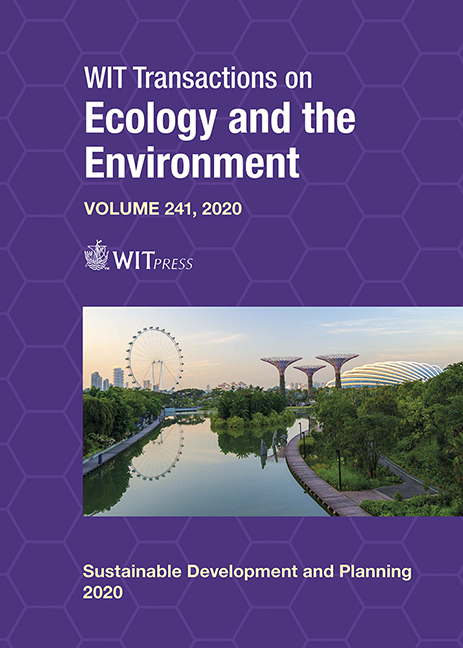INTEGRATED APPROACH FOR OPTIMIZING THE TOURISTIC SPACE PLAN FOR SUSTAINABLE URBAN DEVELOPMENT: A CASE STUDY OF DALIAN CITY, CHINA
Price
Free (open access)
Transaction
Volume
241
Pages
11
Page Range
57 - 67
Published
2020
Paper DOI
10.2495/SDP200051
Copyright
WIT Press
Author(s)
QUNSONG ZHANG, EUNYOUNY KIM, CUIXIA YANG, FUCUN CAO, VAN-NAM HUYNH
Abstract
As Dalian, China, is a touristic city, optimization of the touristic space plan has become increasingly important for its sustainable development. In recent years, big data, GIS, computer simulation and other technologies have been applied widely in the field of tourism spatial planning research. However, the integration of those information technology-based methods with the sustainable urban development framework has not been sufficiently studied to suggest how to optimize the spatial planning strategies for scenic spots in urban areas. This paper aims to propose a method for optimizing the layout of tourism space based on the sustainable urban development framework. We used five districts, including the centre of Dalian, as the background for the evolution of scenic spots; simultaneously, we used integrated methods including kernel density estimation (KDE) and spatial syntax, to analyse the spatial pattern of tourism in Dalian. We used big data from the three most authoritative evaluation websites in China, to collect the current popularity and location data of scenic spots. According to the analysis of spatiotemporal patterns, and transportation accessibility of each scenic spot, the results show that there are some problems in the network of tourist attractions, such as low connectivity and unbalanced distribution. Therefore, we propose a method for optimizing the geographical views of spatial structure for tourist attractions in Dalian, as a countermeasure of sustainable urban development.
Keywords
touristic space plan, sustainable urban development, spatiotemporal distribution, scenic spot heat, big data





